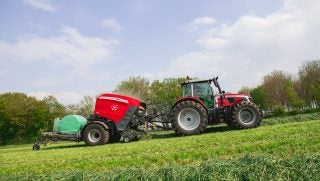Technology in agriculture is how we’ll feed a growing population, make farming more sustainable and improve the lives of farm animals, say 85 percent of the 3,000 participants in a new three-continent consumer survey. At the same time, only about half of those surveyed want their food to come from a technologically advanced (versus traditional) farm. Industries like medicine and education are where respondents most want to see technology used. Farming ranks third — above defense, manufacturing, retail and food.
“We know that new technologies are allowing farmers to make better, faster, more informed decisions to feed a hungry world while protecting the planet,” said Sri Raj Kantamneni, managing director of Cargill’s digital business. “We also know that agriculture is still the least digitalized industry sector in the world. That means there’s a lot of opportunity — and a lot of need — for greater investment in ag tech. This survey highlights that in order to help humanity benefit from these advancements, we first need to do a better job of explaining the value of new technologies to consumers.”
South Korea most positive about ag tech; France, least; U.S., in-between
In its quarterly Feed4Thought survey, Cargill found markedly different perceptions of ag tech across the three surveyed countries. South Korea was the most positive about high-tech farms — both as a source of food (70 percent pro) and for their potential to make farming more sustainable (95 percent pro). France was the most apprehensive — with only 37 percent wanting their food to come from a technologically advanced farm. France and the U.S. thought farmers should benefit most when ag-tech improves operations; South Korea chose consumers. When it comes to tech investments, South Korean and American consumers agreed the top priority should be that it “increases food safety,” while French participants said technology should first and foremost “improve animal well-being.”
Ag tech can deliver on consumer and producer priorities simultaneously
“It’s my responsibility as a farmer to make sure I’m doing a good job and thinking about nature,” says Shelby Fite of Mann Farms in Ohio. “Technology is making everything faster, making everything more efficient.”
Real-time scans in poultry houses, for example, use Artificial Intelligence to give farmers insights so they can maximize animal comfort and health and improve efficiency. Facial recognition, through a strategic partnership between Cargill and Cainthus, will allow producers to track changes in a cow’s appearance to gauge their productivity and well-being. Already, Cargill’s Dairy Enteligen analysis integrates data on milk productivity, feed formulation, cow comfort, and more so farmers can better monitor herd health.
Some technologies more accepted than others
Forty-two percent of survey takers said they’d welcome the use of sensors on the farms that grow their food. Thirty-five percent would be OK with AI. Devices that affix to an animal, such as ‘Fitbits for cows’ and robotic or automated labor (e.g. robotic milkers) were acceptable to 29 percent of respondents.
Next came genomics. A quarter of contributors said they were comfortable with farmers breeding animals based on genetic markers for desirable traits. Finally, 18 percent would embrace feed containing genetically modified ingredients. Younger French and American participants (aged 18 to 34) were slightly more likely than their older counterparts (aged 55+) to accept GM feed.
None of these innovations earned above a 50 percent approval rating, which correlates to respondents naming “consumers desire traditional products” as a top barrier to farmers adopting tech — second only to farm economics.


